The Splendour Of Pothohar
The Pothohar region is a land of philanthropists, scholars and saints
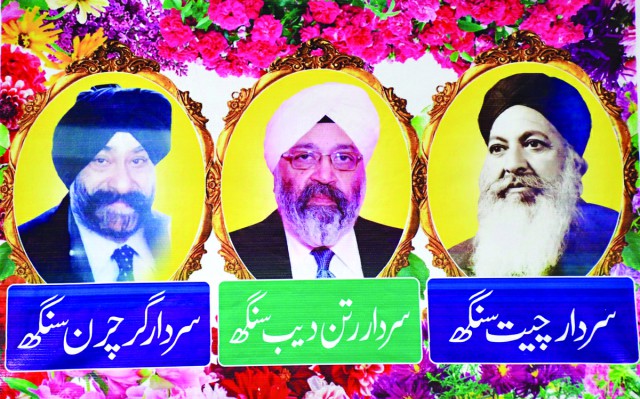
Chakwal district is home to many historic monuments, mystics, scholars and philanthropists. In pre-partition Munday, the village was noted for interfaith harmony. Some of the prominent Sikh philanthropists of Chakwal built schools, hospitals and commissioned digging of tanks and wells were Sardar Chet Singh Kohli , Sardar Mota Singh Bhasin and Sardar Harbans Singh Sisitani.
Sardar Chet Singh Kohli, son of Sardar Hira Singh Kohli, was a prominent philanthropist in Chakwal. He established Sant Singh Khalsa school in 1910. The founding father of Chakwal Khalsa School was Sardar Harbans Singh Sistani but Sardar Chet Singh also played an instrumental role in establishing a school along with his friends. The façade of the school bears “S. Hira Singh A. V School Mundey in memory of his father S. Hira Singh, this institution was started off by his humble son S. Chet Singh 9th June 1918.”
Sant Ram Sethi became the first headmaster after the middle school was upgraded to a high school in 1946, which produced many eminent politicians, bureaucrats and military officers. Apart from establishing the school and building tanks and wells in Munday village, Sardar Chet Singh also established a hospital here.
A marble plaque on the wall of a corridor in the school- Courtesy of Dr Zulfiqar Ali Kalhoro
Sant Ram Sethi became the first headmaster after the middle school was upgraded to a high school in 1946, which produced many eminent politicians, bureaucrats and military officers. Apart from establishing the school and building tanks and wells in Munday village, Sardar Chet Singh also established a hospital here.
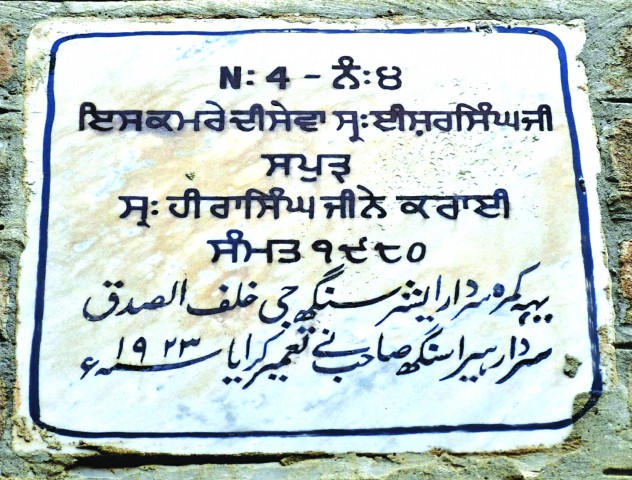
Today, Sardar Chet Singh Kohli is no more. But he lives on in his monuments which he built to provide social service to the village community irrespective of caste and creed. And he lives in the memories of the people of Munday who have preserved them for posterity.
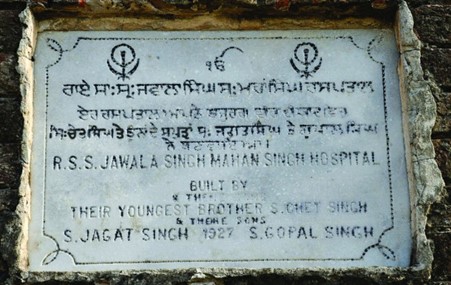
KAUNTRILA – Home of Bakshis
Kauntrila, situated 15 km south of Gujar Khan, is a historic town of Pothohar. It holds the Mughal-era Bakhshi Ram Singh Haveli. It remembers Bakhshi Lajja Singh (d.1799), the chief of the Bakhshis of Basali and was a general of Ahmad Shah Abdali. Their ancestors played an important role in political history during the Mughal period (1526-1857). The magnificent Bakhshi Ram Singh Haveli is a beautiful reminder of that era
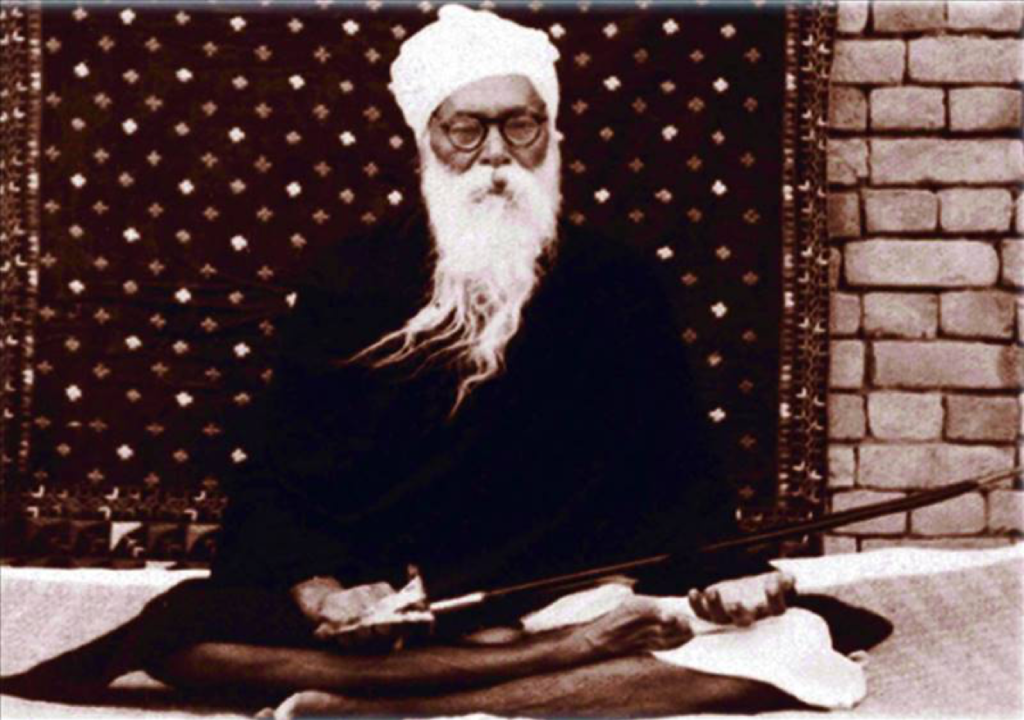
KALGIDHAR TRUST, Baru Sahib finds its root in Konoha, Pothohar
It is believed that religious educator and pioneer Saint Attar Singh Ji of Mastuana (1866-1927) meditated in the forest called Palahi di Jhangi (the forest of Cassia). He undertook a campaign to educate people about the Sikhism and a pious way of life.
DHAMALI
Before the Partition of 1947, Dhamali (aka Thamali) , was mainly inhabited by the Sikh community. Mai Rami who was known for her welfare works in the village got a well dug for the villagers, as did Balwant Singh. There also existed a well which was believed to have been dug by famous general Hari Singh Nalwa (d.1837).
The gurdwara of Dhamali, ‘Sanata Da Dera’, was built by Sant Bhai Ram. Bhai Sanokh Singh looked after the construction of Gurdwara Tapiana Sahib at Kanoha.
SUKHO
Sukho in Gujar Khan was an important and flourishing grain market in the British colonial period led by Sikh Merchants. The old name of Sukho was Sarna, which was, according to Waja Tasmia Dehat Pargana Dangali wa Pharwala (Raizada Brij Nath) named after a Hindu who belonged to the Khatri caste.
The Choubaras of Hari Singh, Dogar Singh, Santokh Singh and Nanak Singh Bhagat Singh Bindra, and Harnam Singh Bindra dominated the landscape of Sukho. Bhagat Singh built the Memorial Ward in memory of his wife Raj Kaur in 1936. The premises of the dispensary has a well, built by a Hindu lady Sabhadra Devi in memory of her relative Dina Nath in 1938. Physicians ( Hakeem) : Nanak Singh and Pindi Das
3km South of Sukho is Samadhi of Baba Mohan Das, a popular shrine of an Udasi ascetic of colonial Punjab. Baba Mohan Das was a Udasi saint venerated by both Hindus and Sikhs in Rawalpindi. After he died, guruship was passed to Baba Gurditta and then his four disciples Almast, Balu Hasne, Phul and Goinde. They preached the Udasipanth faith in Punjab and Sindh.

The caves of Pothohar bore practices of tapas by Nath and Udasi ascetics. The famous monastery Tila Jogian attracted ascetics of Jianist, Buddhist and Sikh faith. According to the Rawalpindi District Gazetteer, Baba Mohan Das lived in a self-dug cave.
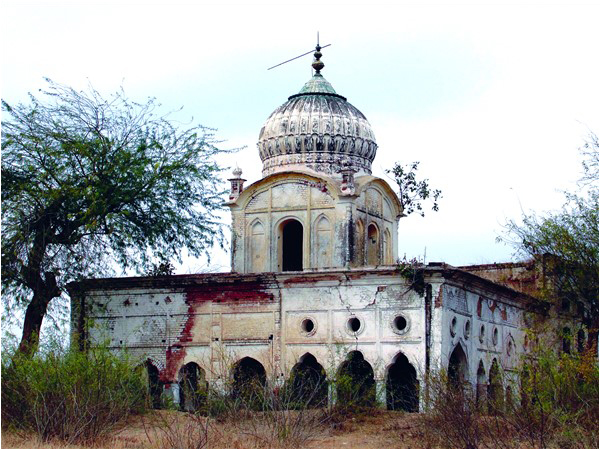
KOT FATEH KHAN, ATTOCK
The village of Kot Fateh Khan is dotted with Muslim and Sikh monuments of the British period. The centerpiece is the syncretic Sikh shrine of Baba Than Singh, also venerated by the Muslims as ‘Sultan’ and ‘Baba Thana’. Modernly even Muslims seek blessings of the Sikh Saint, reflecting the syncretic nature of the shrine.
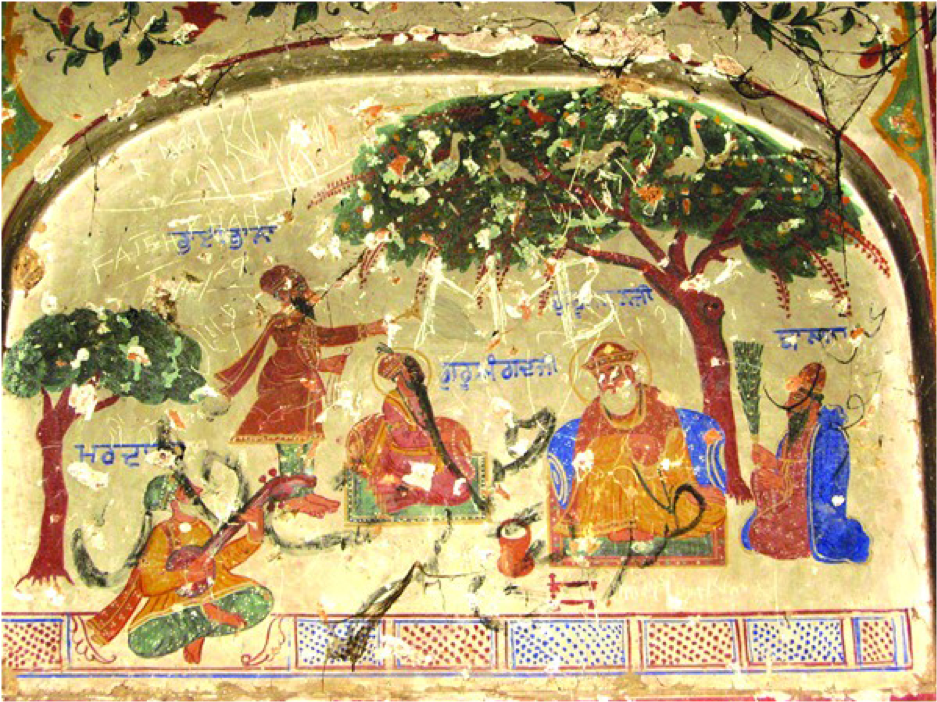
KATAS RAJ TEMPLES
The small hamlet of Katas, commands one of the important strategic routes of invasions in fertile plains of the Punjab by ancient conquerors from Central Asia. The ancient route from Attock on the Indus led them to Lilla situated at a sharp bend of River Soan in the Pothohar region and then through Bhaun and Kalir Mahar to the meadow of Gandhala. Mahmood Ghazna and Babar in all probability followed this route for their access to Bhera and Khushab.
Katas, significant for the temple complex dedicated to Lord Shiva, is an important Hindu pilgrimage site in Pakistan. Katasraj group of temples is attributed to Hindu Shahiya period.
Katas Raj Temple
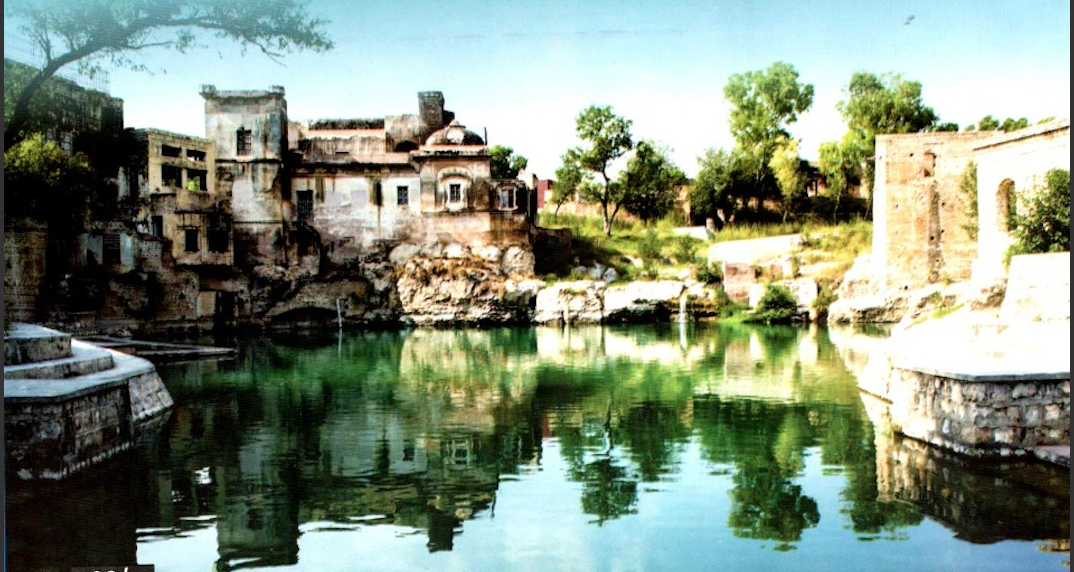

Video Courtesy

Video Courtesy
ROHTAS FORT - A world heritage site
Rohtas Fort is one of the largest fort in South Asia built by Sher Shah Suri. It is a magnificent and exceptional specimen of 16th century’s military architecture. This fort was built to keep a check on the possible return of the Mughal Empire Humayoun who did manage to capture it back in 1555. A village grew within the walls and exists today.
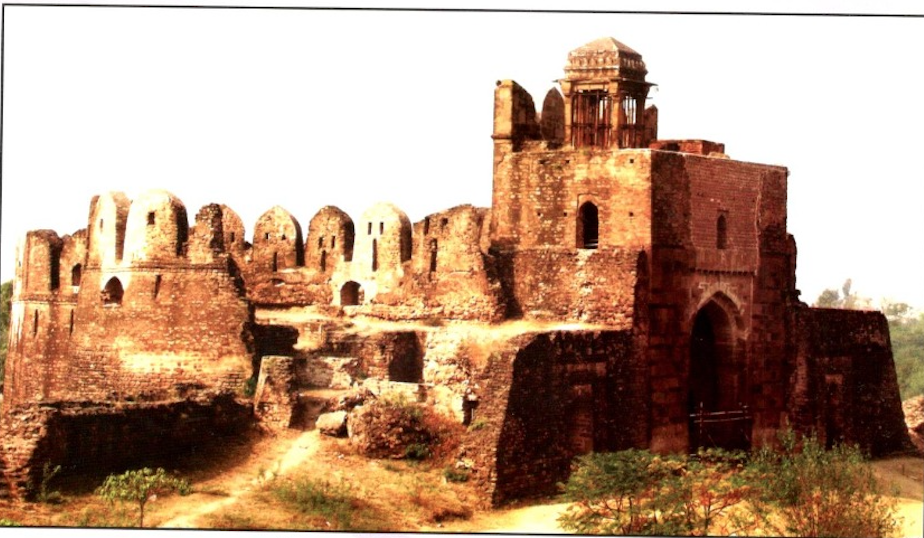
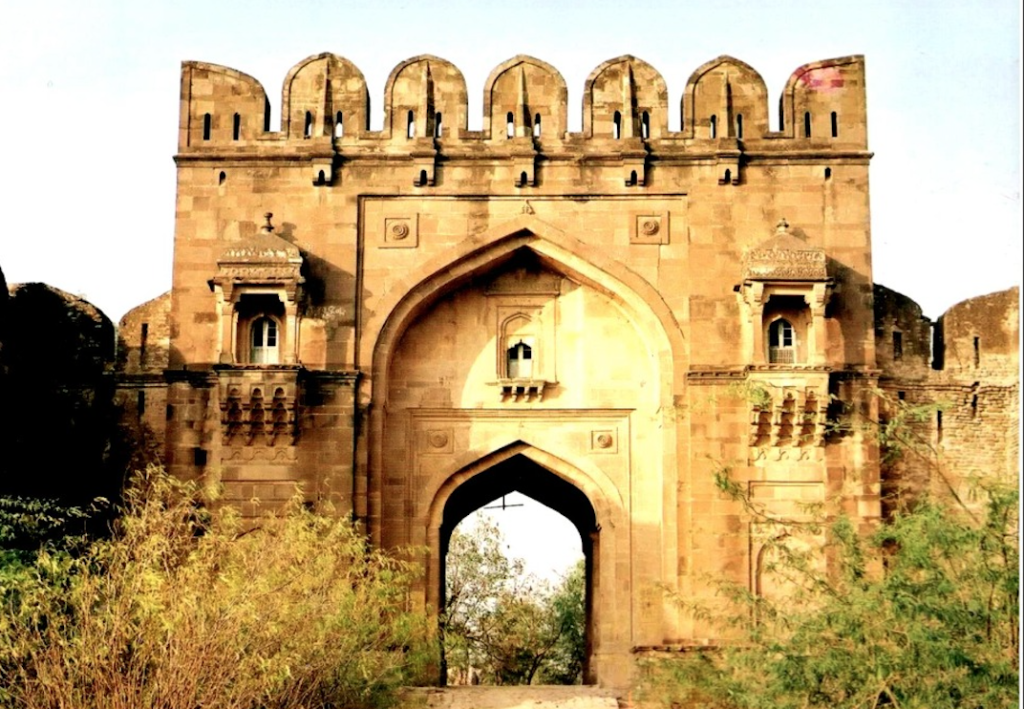
NAYIKA PAINTINGS
Pothohar is pluralistic and bears buildings erected by Muslims, Hindus and Sikhs. The paintings reflect this pluralism, but also focus on themes of the ‘Nayika’, the romantic heroine and her friends (Sakhis). The art shows Nayika in different postures and moods. For the Pothohari painters, mural paintings revolve around the love and dalliance between Radha as Nayika (heroine) and Krishna as Nayaka (hero). These depictions are found in the courtyard of Khem Sindh Bedi haveli, on a wall of Kalyan Das Temple in the Pindi Kohati bazaar and the Krishna Temple at Kallar Syedan. Interestingly, Laila is painted as a Nayika in Sikh and Hindu havelis.
This depiction of the Nayika is found in the courtyard of Khem Sindh Bedi haveli. Another beautiful depiction of a lady checking her adornments in the mirror is painted in on a wall of Kalyan Das temple in the Kohati Bazaar in Rawalpindi. Apart from many depictions of Nayikas and gopis in the Khem Singh Bedi haveli, there are some Nayika paintings in the Krishna temple at Kallar Syedan.
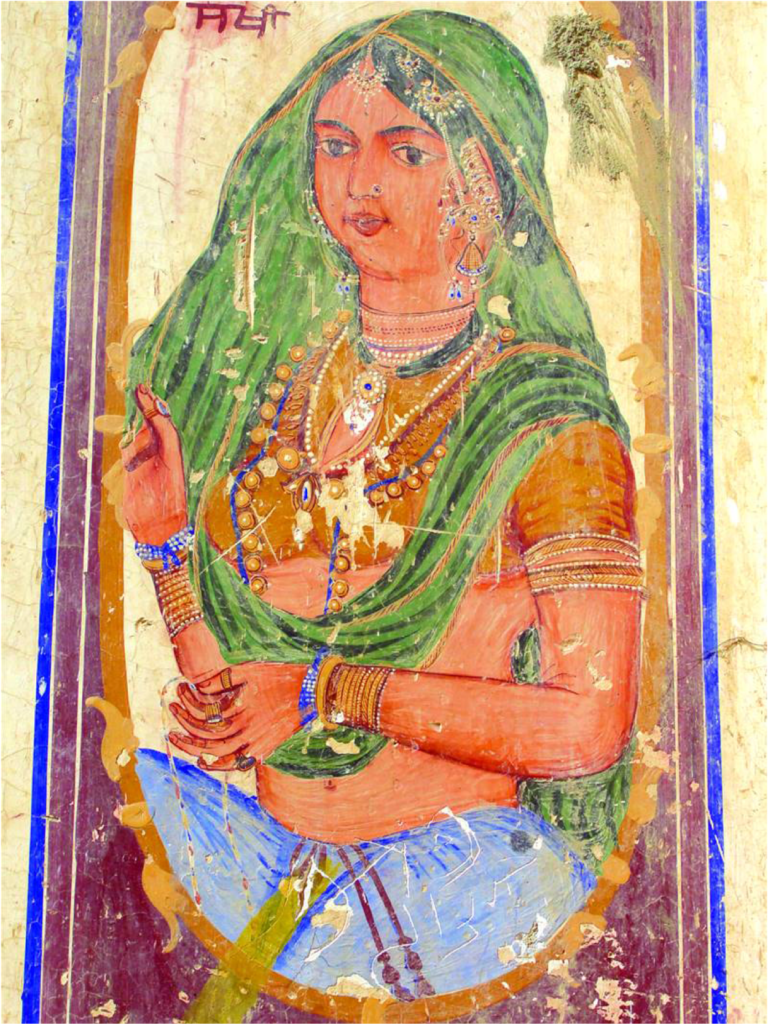
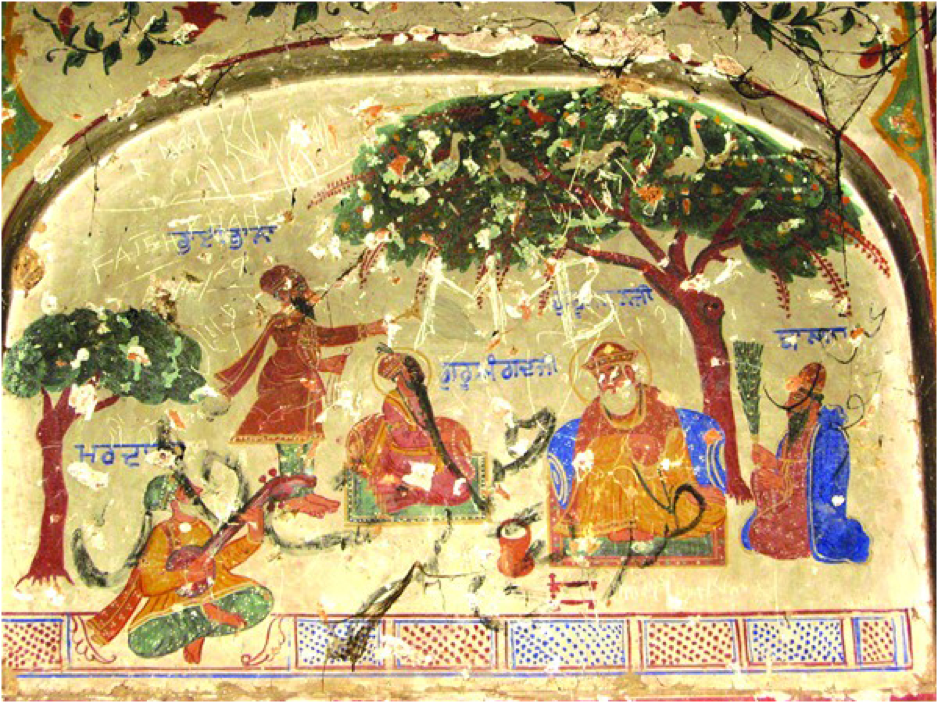
Apart from painting Krishna and gopis in the temples of Kalyan Das, Kallar Syedan and the haveli of Khem Singh Bedi, the Pothohari artists also painted Laila as a Nayika in the Sikh and Hindu havelis. In fact, it is quite interesting to see the depiction of Laila in Sikh and Hindu havelis.
PANJA SAHIB
Panja Sahib is one of the holiest shrines for the Sikhs. It marks the place where the first Sikh Guru, Guru Nana Dev Ji, crushed the arrogance of a pir and showed his saintly powers. On his way back from Mecca, Guru Ji along with his disciple Bhai Mardana stopped near a village where Hasan Abdal stands today. When the villagers started flociking towards Guru Ji, it angered the pir Wali Kandhari who lived at top of the hill and had access to the fresh water spring. He stopped the water and even pushed a huge boulder towards Guru Nanak. Guru Ji raised his hand and the boulder stopped just against his palm and that palm (panja) is imprinted onto the stone forever. Wali Kandhari sought forgiveness and became Guru Nanak’s disciple. Now Gurudwara Panja Sahib stands at the same place.
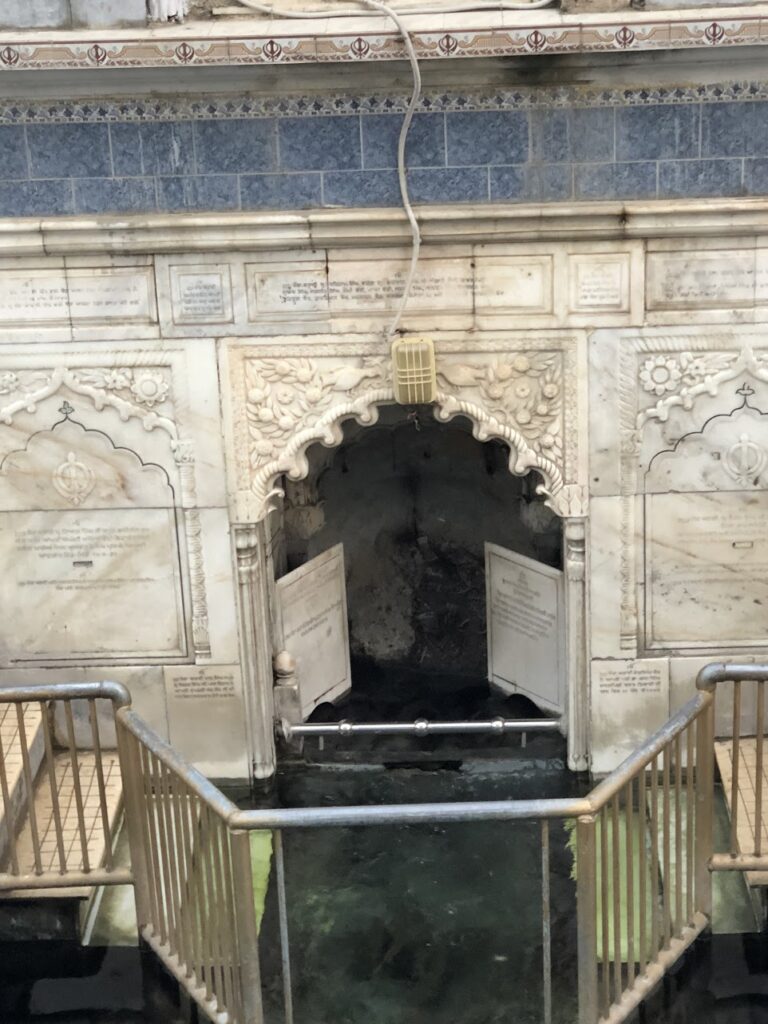
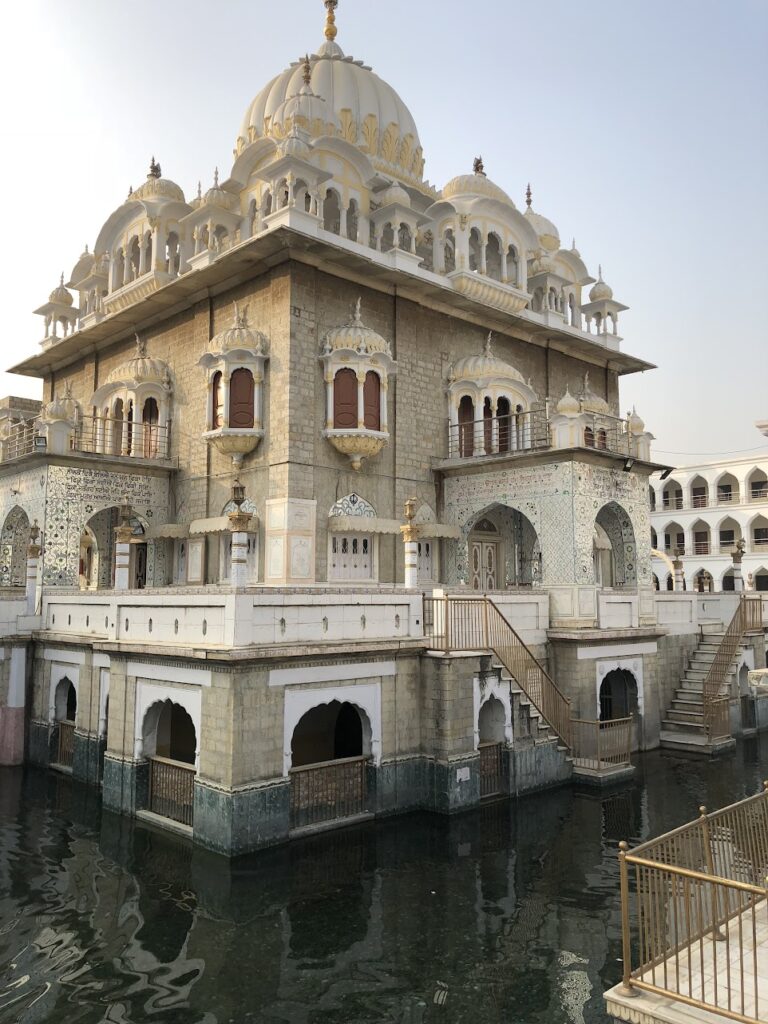
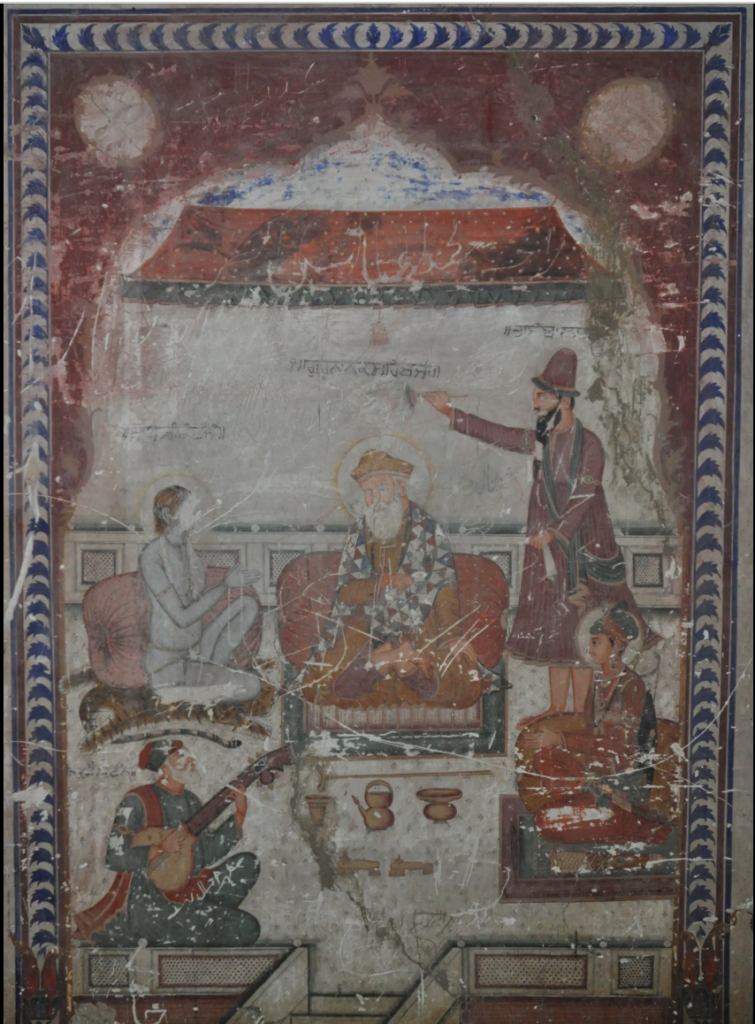
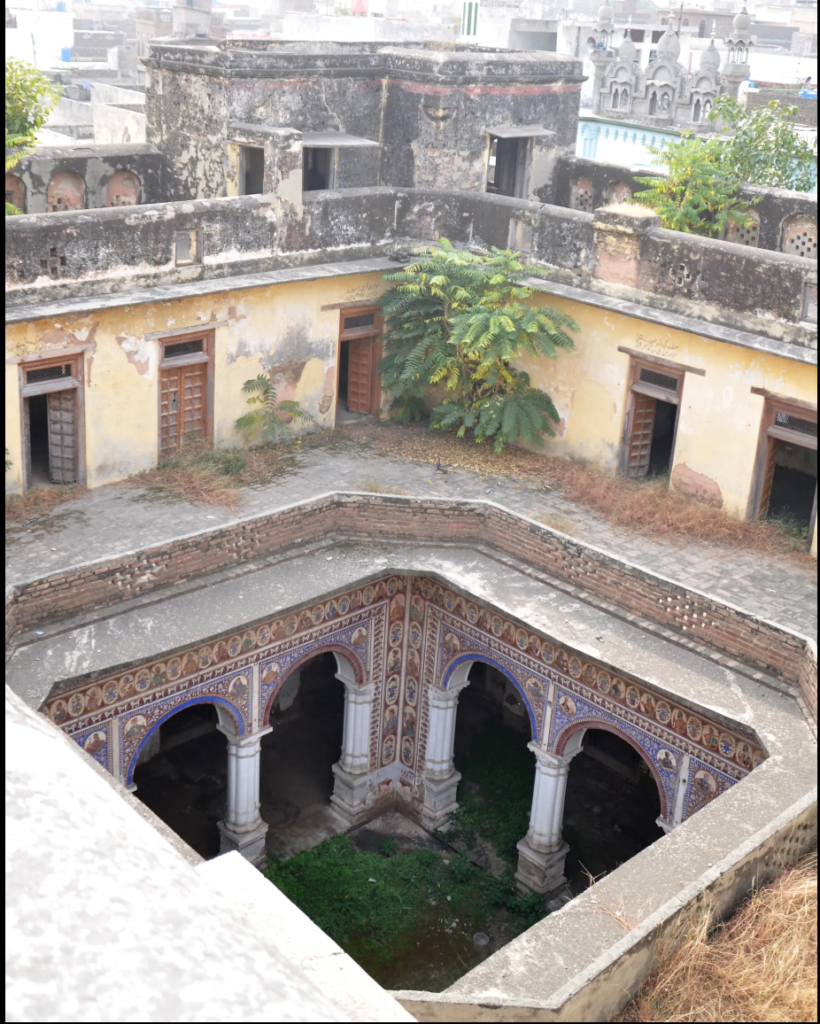
SIR KHEM SINGH BEDI
Sir Baba Khem Singh Bedi was the 14th descendant of Guru Nanak Dev Ji, and is widely credited with reviving Sikhism in Punjab, especially amongst those persecuted following the second Anglo-Saxon war. He founded several schools and had the ‘Sir Baba Khem Singh Bedi Palace’ in Kallar Syedan built in his honour. A variety of Hindu gods, warriors and Sikh Gurus can be viewed on the walls of the palace. It is a reminder to us all of the rich heritage of the bygone era and workmanship of artisans. After viewing the Palace, one is left with a lasting impression that Sir Baba Khem Singh was a secular notable
We would like to thank Dr Zulfiqar Ali Kalhoro ,whose various articles published in Friday Times have been reproduced in short form , Dr Muhammad Ilyas Bhatti & Directorate General of Archaeology, Government of Punjab, Pakistan for their support and contribution towards this article.
